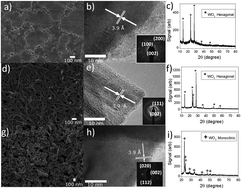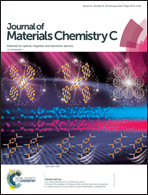Tungsten oxide ion gel-gated transistors: how structural and electrochemical properties affect the doping mechanism†
Abstract
Electrolyte-gated transistors hold promise for applications in printable and flexible electronics. Metal oxide semiconductors are particularly interesting as electrolyte-gated channel materials for their abundance, thermodynamic stability and ease of processing under ambient conditions. In this work, we synthesized by sol–gel and hydrothermal methods different types of tungsten oxide to be used as channel materials in ion gel-gated transistors. X-ray diffraction and scanning and transmission electron microscopy revealed that the differently processed oxides show a different structure (hexagonal and monoclinic) and morphology (granular, nanofiber and nanoplate). We studied the electrochemical and transistor properties of the oxides using, as the gating media, two different ion gels prepared from the same ionic liquid, 1-ethyl-3-methylimidazolium bis(trifluoromethylsulfonyl)imide ([EMIM]TFSI), and two different block copolymers. We tentatively propose that for sufficiently high values of the gate–source bias, the doping results from chemical and electrochemical contributions.



 Please wait while we load your content...
Please wait while we load your content...